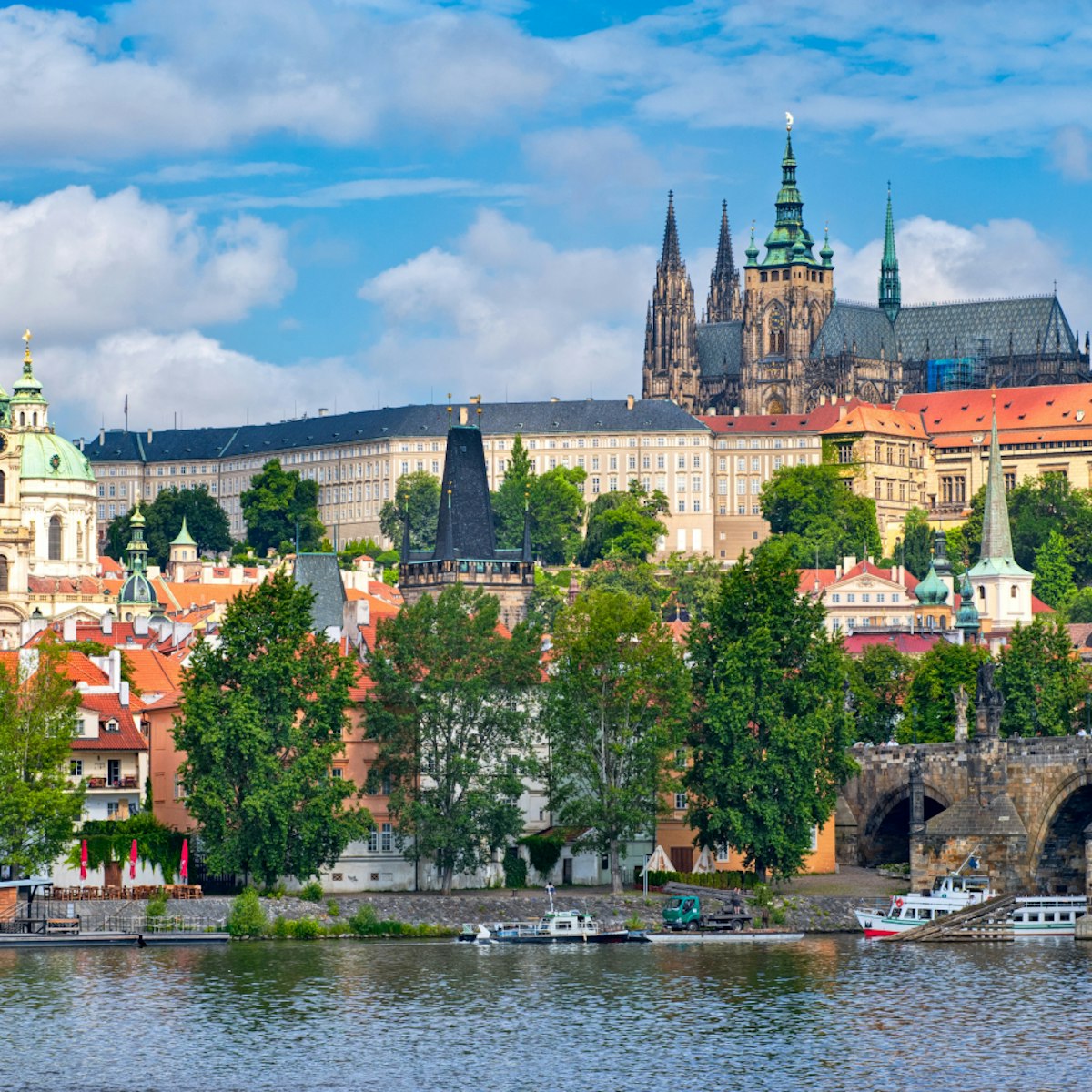The most overlooked of central Prague's attractions, the Klementinum is a vast complex of beautiful baroque and rococo halls, now mostly occupied by the Czech National Library. Most of the buildings are closed to the public, but you can walk freely through the courtyards, or take a 50-minute guided tour of the baroque Library Hall, the Meridian Hall, the Astronomical Tower and (if no events are taking place) the Chapel of Mirrors.
When the Habsburg emperor Ferdinand I invited the Jesuits to Prague in 1556 to boost the power of the Roman Catholic Church in Bohemia, they selected one of the cityÔÇÖs choicest pieces of real estate and in 1587 set to work on the Church of the Holy Saviour, PragueÔÇÖs flagship of the Counter-Reformation. Its western facade faces Charles Bridge, with its sooty stone saints glaring down at the traffic jam of trams and tourists on K┼Ö├¡┼¥ovnick├® n├ím─øst├¡.
After gradually buying up most of the adjacent neighbourhood, the Jesuits started building their college, the Klementinum, in 1653. By the time of its completion a century later it was the largest building in the city after Prague Castle. When the Jesuits fell out with the pope in 1773, it became part of Charles University.
The baroque Library Hall (1727), magnificently decorated with ornate gilded carvings and a ceiling fresco depicting the Temple of Wisdom, houses thousands of theological volumes dating back to 1600. The Meridian Hall was used to determine the exact time of noon, using a beam of sunlight cast through a hole in one of the walls.
Also dating from the 1720s, the 68m-tall Astronomical Tower is capped with a huge bronze of Atlas and was used as an observatory until the 1930s; it now houses a display of 18th-century astronomical instruments. The tower is still used today as Prague's weather station, with measurements taken without interruption since 1775, making it one of the longest-running series of weather reports in the world.
The Chapel of Mirrors also dates from the 1720s and is an ornate confection of gilded stucco, marbled columns, fancy frescoes and ceiling mirrors ÔÇô think baroque on steroids. Quality concerts of classical music are held here daily (tickets are available at most ticket agencies).
There are two other interesting churches in the Klementinum. The Church of St Clement, lavishly redecorated in the baroque style from 1711 to 1715 to plans by Kilian Dientzenhofer, is now a Greek Catholic chapel. Conservatively dressed visitors are welcome to attend the services. And then thereÔÇÖs the elliptical Chapel of the Assumption of the Virgin Mary, built in 1600 for the Italian artisans who worked on the Klementinum (itÔÇÖs still technically the property of the Italian Government).








